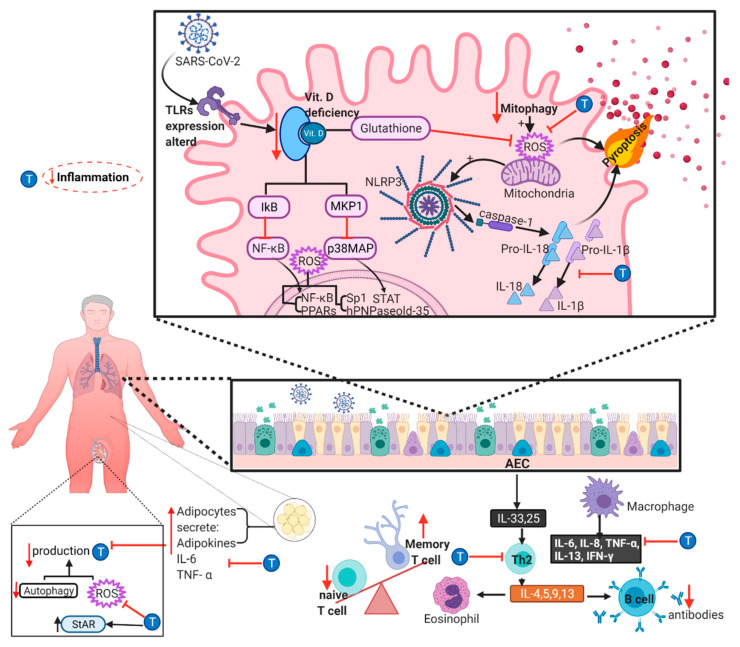Figure 3.
Testosterone mitigates the detrimental effects of inflammaging in COVID-19. Schematic representation of late-onset hypogonadism (LOH) produced by inflammaging markers, reverted with testosterone (T) supplementation, and increasing the steroidogenic acute regulatory protein (StAR) expression leading to T production. Inflammaging is characterized by alterations in autophagy and mitophagy activity, increased reactive oxygen species (ROS) production, cellular senescence, alteration of the expression of toll-like receptors (TLRs) and decrease in the concentration of vitamin D. The higher levels of ROS activate NLRP3, activating IL-1β and IL-18 production and pyroptosis, a mechanism that the StAR could block by inducing T production. ROS also activate the transcription factors hPNPaseold-35, NF-κB, AP-1, Sp1 and PPARs. The senescent adipocytes increase the secretion of adipokines and cytokines, such as IL-6 and TNF-α, that can also be inhibited by T. Immunosenescence can present alteration of the ratio of CD4+/CD8+ T cells, decrease immature T cells, increase memory T cells, alter Th2 response, and modify the production of pro-inflammatory cytokines. Abbreviations on the figure: T, testosterone; hPNPaseold-35, human polynucleotide phosphorylase; AP-1, activator protein 1; Sp1, specification protein 1; PPARs, peroxisomal proliferator-activated receptors; NLRP3, NOD-like receptor 3; Vit. D, vitamin D; ROS, reactive oxygen species; AEC, airway epithelial cells; StAR, steroidogenic acute regulatory protein.

